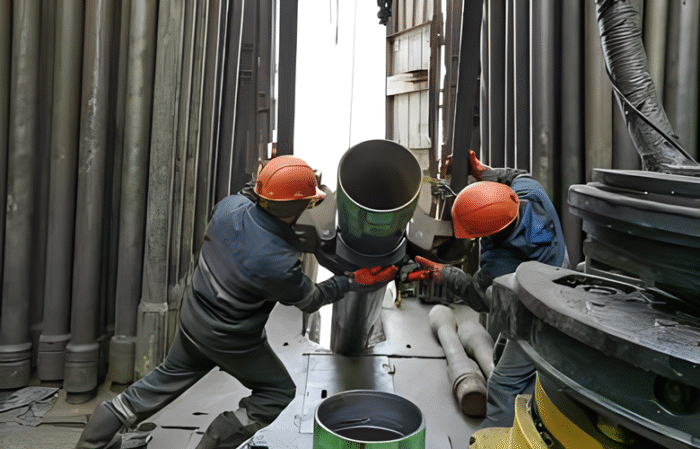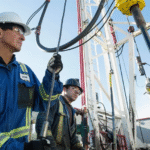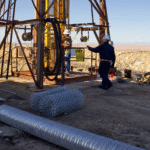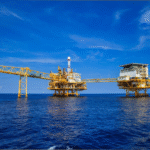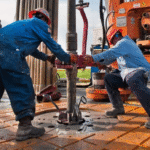Use of Oil and Gas Well Cementing
Oil and gas well cementing is a critical process in the oil and gas industry that involves the placement of cement into the wellbore to provide zonal isolation and structural integrity. It plays a crucial role in ensuring the safe and efficient production of oil and gas reservoirs. Let’s delve into the key aspects of oil and gas well cementing.
What Is Oil and Gas Well Cementing?
Oil and gas well cementing is a critical process in drilling and completing wells. It involves pumping specially formulated cement slurry into the wellbore to seal and support the casing, isolate formation zones, and protect the well from fluid migration. Proper cementing ensures the structural integrity, productivity, and environmental safety of oil and gas wells.
Why Is Cementing Necessary in Oil and Gas?
1. Zonal Isolation
Well cementing provides effective zonal isolation by sealing off different subsurface formations. This prevents the intermixing of fluids such as oil, gas, and water, thereby:
-
Protecting freshwater aquifers
-
Enhancing reservoir pressure management
-
Reducing cross-contamination risks
2. Casing Support and Bonding
Cementing helps anchor the steel casing in the wellbore. This:
-
Provides mechanical support to the casing
-
Prevents casing collapse and movement
-
Enhances resistance to downhole pressures and corrosive fluids
3. Formation Stability
Cement reinforces weak or unstable formations, especially in fractured or unconsolidated zones. It helps maintain borehole integrity and prevents collapse during and after drilling operations.
4. Corrosion Protection
Oil well cement creates a chemical barrier that protects the casing from corrosive formation fluids like CO₂, H₂S, and brine. This prolongs the life of the well and reduces maintenance costs.
5. Plugging and Abandonment (P&A)
When a well is no longer productive, cement plugs are used to safely seal the well. This is vital for:
-
Long-term environmental protection
-
Preventing future leaks or fluid migration
-
Regulatory compliance during well abandonment
6. Blowout Prevention and Kick Control
A solid cement job enhances well control by containing formation pressures and minimizing the risk of:
-
Kicks (unexpected influxes of formation fluids)
-
Blowouts, which are uncontrolled releases of oil or gas
7. Preparation for Hydraulic Fracturing
In unconventional drilling (e.g., shale gas), cement integrity is essential to withstand high-pressure fracking operations. It ensures that fractures remain confined to target zones, improving production efficiency.
Why Cementing Is Critical in Oil and Gas Wells?
Oil and gas well cementing is more than a routine step—it’s a safety-critical operation that impacts the entire lifecycle of the well. From zonal isolation to environmental protection and well longevity, cementing plays a foundational role in successful drilling operations.
For optimal results, operators must use high-performance cement additives, proper slurry design, and precise placement techniques.
Primary Cementing:
Primary cementing is the initial cementing operation performed during well construction. It involves pumping cement slurry into the annular space between the casing and the wellbore. The cement slurry fills the space, displaces drilling fluids, and forms a solid, impermeable barrier. Primary cementing ensures proper zonal isolation, supports the casing, and provides structural integrity to the well.
Cement Slurry Design:
The design of the cement slurry is a critical aspect of well cementing. The slurry is formulated based on various factors such as well conditions, wellbore geometry, formation properties, and environmental considerations. The slurry typically consists of cement, water, and additives. Additives can include dispersants, accelerators, retarders, and thickeners, which are used to adjust the slurry’s properties and performance.
Cementing Operations:
Cementing operations involve several steps. First, the wellbore is prepared by cleaning and conditioning to ensure proper bonding of the cement. Then, the casing is run into the wellbore and cementing plugs are set at the bottom and top of the casing. The cement slurry is pumped down the casing, displacing the cementing plugs and filling the annular space. After the cement is in place, it is allowed to cure and harden to form a solid barrier.
Cement Quality Control:
Ensuring the quality of the cement is of utmost importance. Cement quality control involves testing and monitoring the properties of the cement before and during the cementing operations. Testing includes assessing the cement slurry’s consistency, density, thickening time, compressive strength, and fluid loss. These tests help verify that the cement meets the required specifications and will provide the desired zonal isolation.
Cementing Challenges:
Well cementing can present challenges such as maintaining proper cement placement, preventing gas migration, mitigating the risk of cement sheath failure, and addressing wellbore instability. These challenges require careful planning, design, and execution of the cementing operation. Advanced techniques such as centralization, casing accessories, and cement additives are employed to overcome these challenges and enhance wellbore integrity.
Remedial Cementing:
Remedial cementing is performed when issues arise with the primary cement job or during well operations. It involves the placement of additional cement to repair or improve the existing cement sheath. Remedial cementing can address problems such as inadequate zonal isolation, casing leaks, or changes in well conditions. It is crucial for maintaining well integrity and prolonging the productive life of the well.
Overview of Cementing Functions and Benefits
| Function | Purpose | Benefits |
|---|---|---|
| Zonal Isolation | Seal between formations and casing | Prevents fluid migration, ensures well control |
| Casing Support | Bonds casing to formation | Improves structural strength and reduces casing movement |
| Formation Stability | Stabilizes weak geological zones | Prevents borehole collapse and formation damage |
| Blowout Prevention | Controls downhole pressures | Enhances safety and reduces risk of well control incidents |
| Corrosion Protection | Shields casing from corrosive fluids | Extends life of well infrastructure |
| P&A Applications | Seals well during decommissioning | Ensures environmental protection and regulatory compliance |
Frequently Asked Questions(FAQ)
What materials are used in oil well cementing?
A: The most common material used is Portland cement, often blended with additives like retarders, accelerators, fluid-loss agents, and weighting materials to optimize performance under varying pressure and temperature conditions.
Why is zonal isolation important in oil and gas wells?
A: Zonal isolation prevents the migration of fluids (oil, gas, or water) between geological formations. This protects freshwater zones and enhances well control, efficiency, and production.
How long does well cementing take?
A: Cementing a section of casing typically takes a few hours, depending on the well depth, slurry type, and complexity. However, curing and testing cement strength can take 12–72 hours.
What happens if cementing is done poorly?
A: Poor cement jobs can lead to well integrity failure, fluid migration, pressure build-up, corrosion of casing, reduced production, or even catastrophic blowouts.
Is cementing required for all wells?
A: Yes, cementing is a standard and legally required process for oil and gas wells to ensure environmental safety, regulatory compliance, and operational performance.
Conclusion: Why Cementing Is Critical in Oil and Gas Wells
Oil and gas well cementing is more than a routine step, it’s a safety-critical operation that impacts the entire lifecycle of the well. From zonal isolation to environmental protection and well longevity, cementing plays a foundational role in successful drilling operations.
For optimal results, operators must use high-performance cement additives, proper slurry design, and precise placement techniques.
Oil and Gas Well Cementing is a critical process that ensures zonal isolation, well integrity, and safe production. It involves the design and placement of cement to provide a reliable barrier between formations and casing strings. Proper cement slurry design, careful execution, and quality control are essential for successful cementing operations. By achieving effective zonal isolation through well cementing, oil and gas companies can optimize production, minimize environmental risks, and maintain the long-term integrity of their wells.
-
Oil and gas well cementing
-
Cement slurry design
-
Well integrity in drilling
-
Oilfield casing and cementing
- Functions of cementing in oil and gas wells
🛠️ Need High-Performance Cementing Solutions for Your Oil & Gas Projects?
Looking for expert guidance on well cementing design, additives, or field services?
For more information or to place an order, please contact PUB-Ltd sales team @ Contact Us. PUB-Ltd as your Premium Supplier.
📩 Contact our team of drilling and cementing specialists today to ensure well integrity, environmental safety, and long-term production success. Our Expert will be in touch with you to guide you about the Gilsonite for Oil and Gas Industry, that can be produced according to your project requirements.

